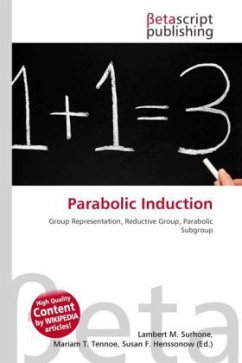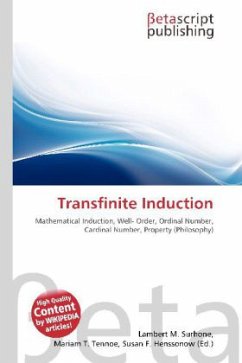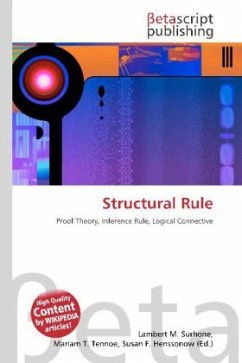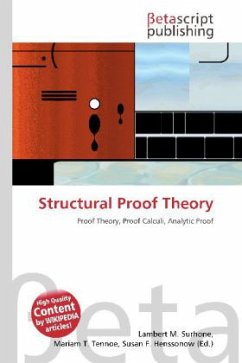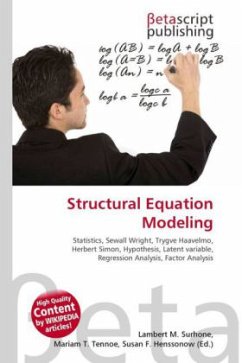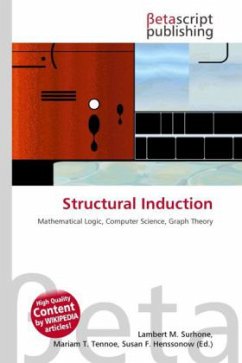
Structural Induction
Versandkostenfrei!
Versandfertig in 6-10 Tagen
23,99 €
inkl. MwSt.

PAYBACK Punkte
12 °P sammeln!
Please note that the content of this book primarily consists of articles available from Wikipedia or other free sources online. Structural induction is a proof method that is used in mathematical logic (e.g., the proof of o '' theorem), computer science, graph theory, and some other mathematical fields. It is a generalization of mathematical induction. Structural recursion is a recursion method bearing the same relationship to structural induction as ordinary recursion bears to ordinary mathematical induction. In general, the idea is that one wishes to prove some proposition P(x), where x is a...
Please note that the content of this book primarily consists of articles available from Wikipedia or other free sources online. Structural induction is a proof method that is used in mathematical logic (e.g., the proof of o '' theorem), computer science, graph theory, and some other mathematical fields. It is a generalization of mathematical induction. Structural recursion is a recursion method bearing the same relationship to structural induction as ordinary recursion bears to ordinary mathematical induction. In general, the idea is that one wishes to prove some proposition P(x), where x is any instance of some sort of recursively-defined structure such as lists or trees. A well-founded partial order is defined on the structures ("sublist" for lists and "subtree" for trees). The structural induction proof is a proof that the proposition holds for all the minimal structures, and that if it holds for the immediate substructures of a certain structure S, then it must hold for S also. (Formally speaking, this then satisfies the premises of an axiom of well-founded induction, which asserts that these two conditions are sufficient for the proposition to hold for all x.)



